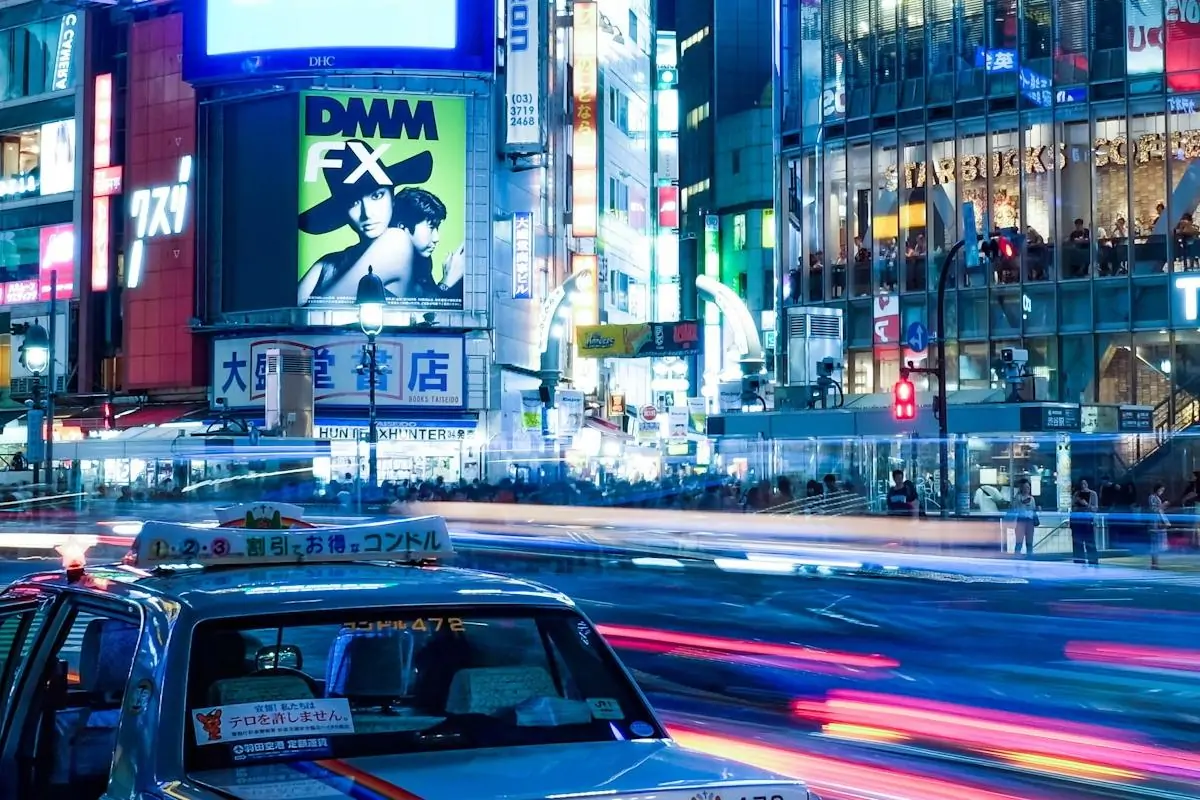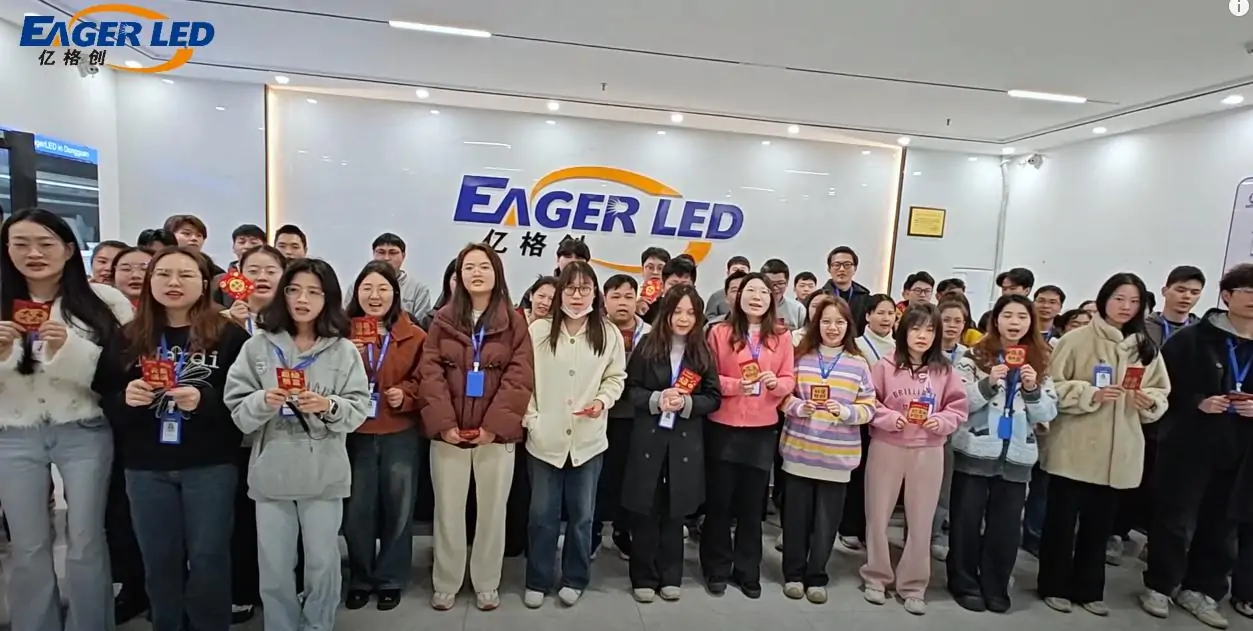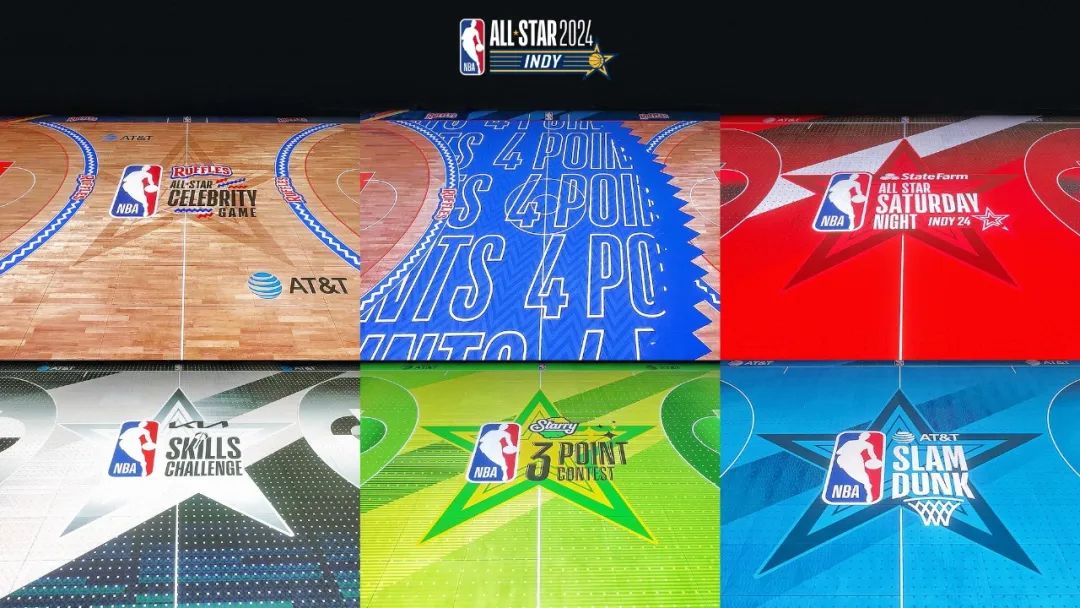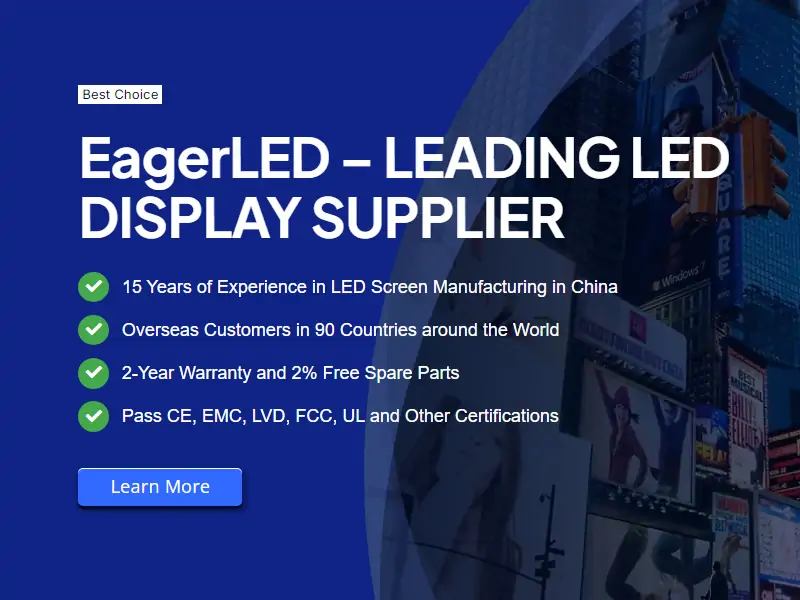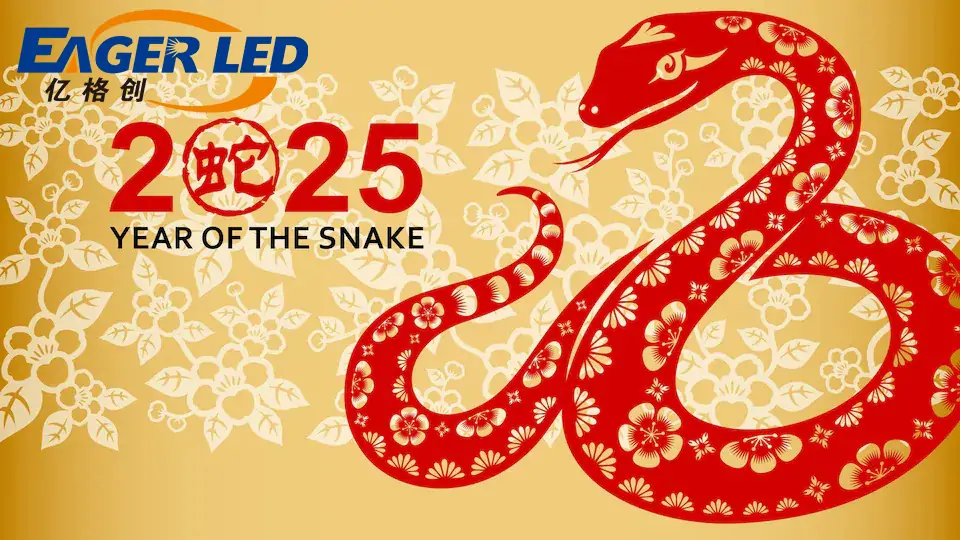In today's advanced time, businesses are turning to advertising LED screens and transparent LED displays to upgrade their [...]
As we step into the new year, EagerLED is filled with excitement and optimism for the journey ahead. [...]
The world of display technology has advanced quickly, and LED screens are at the cutting edge of this [...]
When it comes to finding the best LED Screen Factory, there are a few components to consider to [...]
📢 Holiday Notice 📢 Dear Customers, With Chinese New Year around the corner, we will be on holiday from January 23rd, 2025 [...]
Catetory
2025 New LED Screen Price for You
2025 New LED Screen Price for You
Fill in the information and get your LED screen budget immediately!
Featured Articles
LED screen resolution represents the sharpness and color accuracy of images. It is the backbone of how we perceive display content and plays a key role in clear visuals.
What exactly it is and why it is very important for LED displays? This article will explain everything you want to know including definitions, types, differences, importance, and calculations, helping you comprehensively learn about LED display resolution and choose better resolutions.
1. What is LED Screen Resolution?
When it comes to LED screen resolution, you are curious about why it affects the clarity and sharpness of images. Here we will dive into what it is and core terms related to LED display resolution.
1.1 Definition of LED Screen Resolution
LED screen resolution defines the total number of pixels(dots of light) on a screen, calculated by width and height. For example, the LED video wall resolution of 3840×2160 indicates 3840 pixels in width and 2160 pixels in height.
Smaller pixel pitches pack more pixels per meter, resulting in sharper and more vibrant picture quality. Therefore, LED screen resolution represents image clarity and content compatibility. High resolution LED display provides audiences with a stunning, crisp, and vivid visual effect.
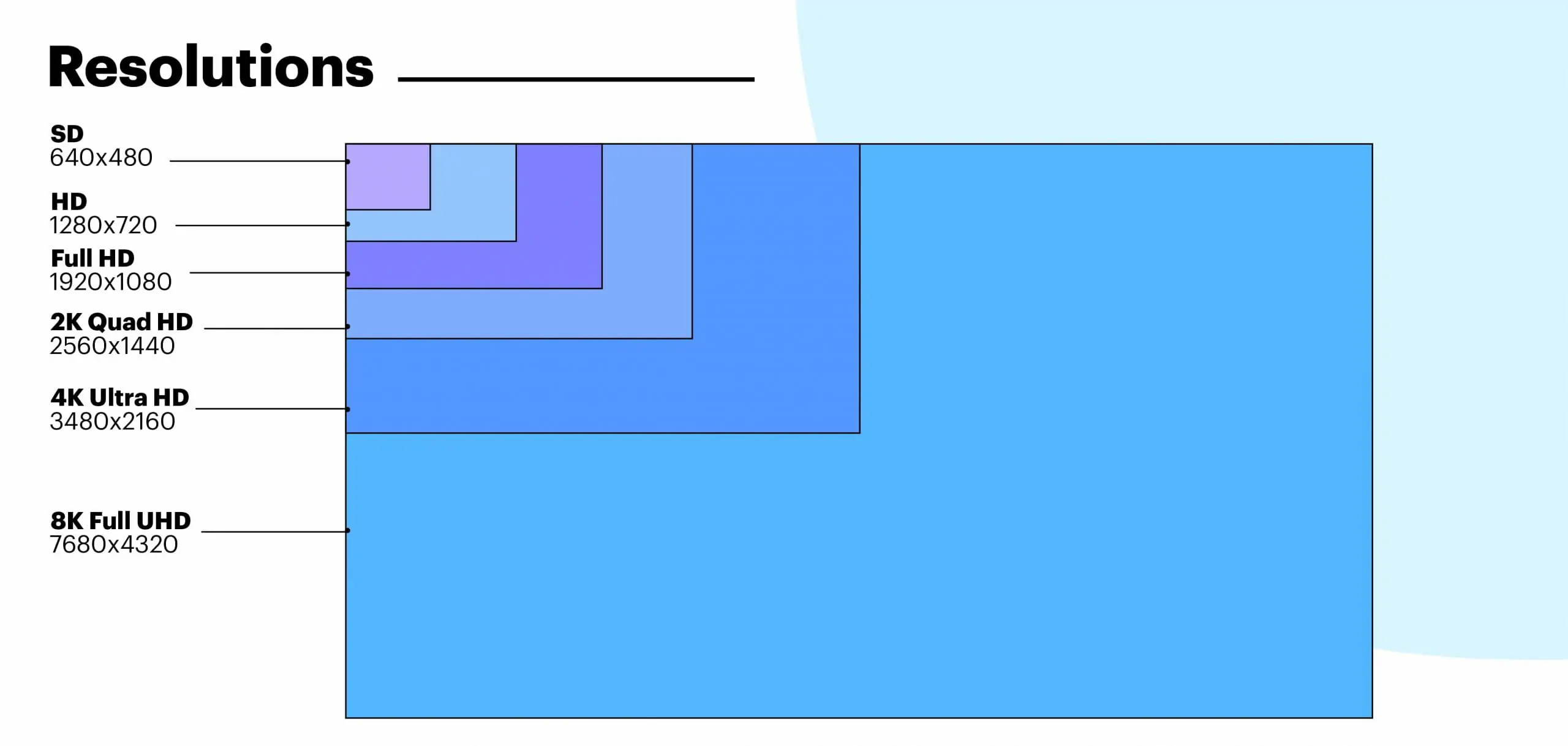
1.2 Core Terms about LED Screen Resolution
The core terms of LED display resolution include pixels, pixel density, pixel pitches, and aspect ratios, which are critical components to help you further understand LED resolution.
1. Pixels
Pixels are the smallest unit of an LED screen. Think of it as a single “dot” of light that makes up images. More pixels mean higher resolution.
2. Pixel Density
Pixel density measures the quantity of pixels in a given screen surface, expressed in pixels per inch (PPI) or pixels per meter (PPM). High pixel density means more detailed and crisp picture displays.
3. Pixel Pitch
Pixel pitch is the distance from the center of one LED pixel to the center of the adjacent pixel. A smaller pixel pitch means a closer distance between pixels while indicating higher resolution. It is an important spec defining an LED screen’s clarity.
4. Aspect Ratios
Aspect ratio is the proportion of a display’s width and height, usually expressed in width:height like 4:3, or 16:9. It impacts how content is displayed and defines the shape of the viewing area.
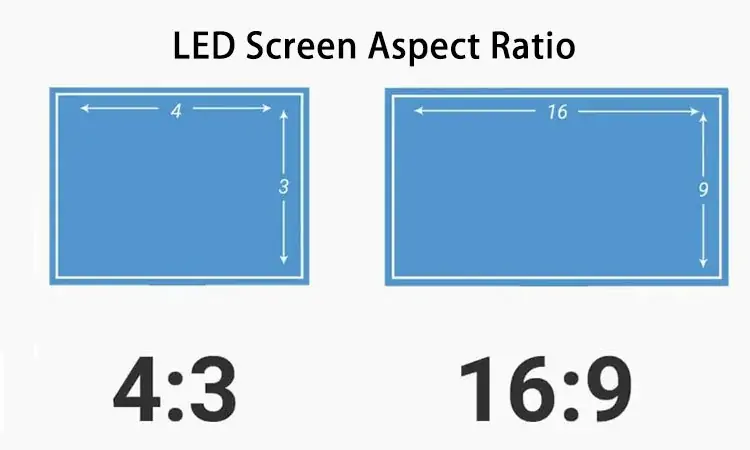
These elements work together to influence LED screen resolution. It is beneficial for you to understand how resolution determines image clarity and quality.
2. 4 Types of LED Display Resolutions
The LED screen resolution is divided into HD, Full HD, QHD, and Ultra HD. These terms mean the number of pixels on the screen and decide the level of sharpness and clarity. Let’s break down the common LED display resolution types.
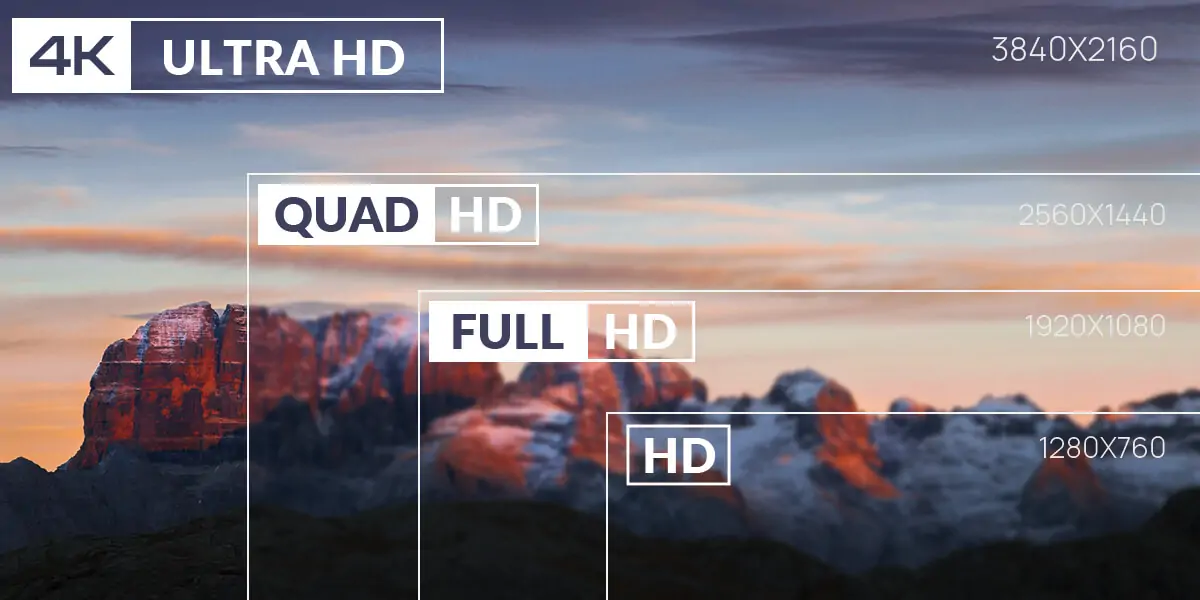
2.1 HD(720P)
The entry-level of the high definition is 1280×720 pixels. Compared with standard definition(SD), it offers better clarity. It is suitable for small screens, older TVs, and budget phones.
2.2 Full HD(1080P)
1920×1080 pixels(FHD) offer sharper and more detailed images, which is a common standard for monitors, modern TVs, smartphones, and digital signage.
2.3 QHD(2K)
QHD, Quad HD, denotes 4 times as the standard 720p HD(not Full HD). It is ideal for larger screens, gaming monitors, and premium laptops.
2.4 Ultra HD(4K and 8K)
4K(3840×2160 pixels) is four times more pixels than Full HD, providing exorbitantly sharp detail. In addition, 8K is the newest resolution with 7680×4320 pixels, which is 16 times better than Full HD. They both are applied to large high-tech LED displays.
Each resolution has its unique advantages. Choosing the right one depends on how clear and crisp the images you would like.
3. What Are the Differences Between HD, 1080p, 4K, and 8K in LED Screens?
HD, 1080p, 4K, and 8K refer to LED screen resolution–how many pixels are used to display an image. For LED screens, these differences are vital for understanding image detail, clarity, and visual experience.
3.1 HD(High Definition)
High Definition (HD) is often defined as those images or videos that have a vertical resolution of 720 or higher. Typical HD displays are 1280 x 720 and 1920 x 1080 pixels.
High definition becomes the baseline for modern digital clarity and offers clearer images than SD(Standard Definition). Now, HD is still ideal for budget devices and secondary monitors.
3.2 1080p(FHD)
The ‘p’ refers to progressive scan. So, 1080p means a high-definition resolution of 1920×1080 pixels using progressive scan. Today, it is the global standard for high-definition content.
With a 16:9 widescreen aspect ratio, 1080p is a core spec for LED screens or monitors that need to capture facial expressions or fast motions. It is best for live events, concerts, retail presentations, etc.
3.3 4K
4K refers to a screen resolution of 3840 × 2160 pixels, also known as Ultra High Definition (UHD). It offers four times the detail of Full HD (1080p) and ultra-detailed and lifelike images, providing an immersive viewing experience.
4K is especially important for large LED displays or screens viewed up close such as 3D billboards, LED volumes, and high-end digital signage.
3.4 8K
8K refers to an Ultra HD LED screen resolution of 7680 × 4320 pixels, with a total of more than 33 million pixels. It has four times the resolution of 4K and 16 times the resolution of Full HD (1080p).
8K LED screens offer the image with unmatched detail and lifelike without visible pixels. And they are widely used in luxury brand displays, high-end trade shows, virtual productions, control rooms, ultra-premium 3D ads, and so on.
Key Differences at a Glance
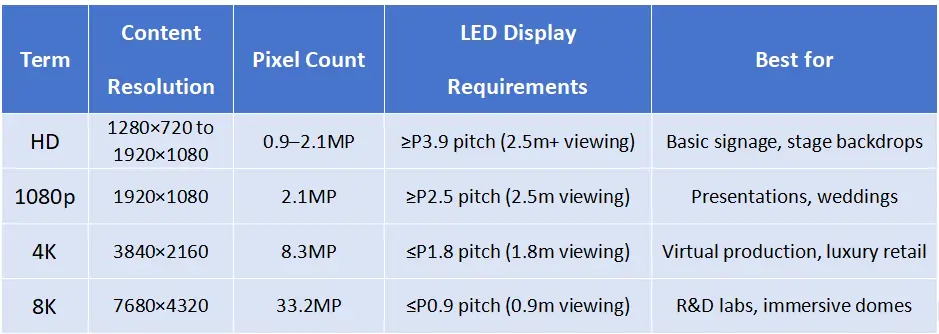
4. Why is Resolution Vital for LED Displays?
The LED screen resolution is fundamental to screen performance because it impacts how clear the content displays and the overall visual effects customers watch. Why resolution matter for LED displays? Here are the reasons.
4.1 Image Clarity
The clarity and details of an image on an LED display are directly dependent on resolution. The higher the LED screen resolution, the more packed pixel density in the display, and as such, the LED screen can show finer lines, textures, and gradients.
It is of particular importance when displaying complicated visuals, like high-definition images, complicated graphs, and video material.
4.2 Immersive Visual Effect
Resolution is critical to making the visual experience immersive, particularly when large LED screens are being employed at a concert, exhibit, virtual production or an interactive location.
With enough pixels to make it an ultra-clear display, viewers will feel immersed in the content like they are part of the screen instead of just being observers.
4.3 Viewing Distance Optimization
When the resolution is low, the closer the LED display appears to the viewer, the larger the gaps between the pixels get.
Inconsistent LED screen resolutions make the audience either uncomfortably lean towards or away, evincing less interaction.
Thus, fine-pitched LED displays are essential in getting rid of the noticeable pixelation and making images more lifelike and vibrant.
Optimal Distance Formula:
Viewing Distance(m)= Pixel Pitch (mm) × 1,000
4.4 Improve Brand Awareness
In public places, high-resolution LED screens stand out amidst the noise, attracting attention and strengthening the brand image through sharp, high-quality visual storytelling.
In short, better resolution means better perception, and better perception can enhance brand awareness and recall. You also can custome resolution according to your needs.
4.5 Color Depth and Gradient Accuracy
High resolution would not just increase clarity, but also enhance the perception of color accuracy and gradients.
The greater the pixel count, the more accurately LED displays may depict minor variations in hues and shadows, making the image look more natural and lively.
This is especially relevant in use like an art exhibition, movie production, or product exhibition where visual realism is significant.
4.6 Forward-Compatible
Investing in high-resolution LED displays is a smart way to future-proof your visual infrastructure.
As content standards continue to evolve (from Full HD to 4K and now 8K), having displays capable of supporting higher resolutions ensures long-term compatibility with future media formats and playback systems.
High-resolution LED screens safeguard your investment and keep your displays relevant for years to come.
Anyway, LED screen resolution is very important as it determines how clear, vivid, and immersive the content is. It is also a vital factor to consider when your ads need high clarity and accurate color consistency.
5. 7 Critical Factors Affecting LED Wall Resolution?
What are the key factors? There are totally 7 factors affecting LED screen solutions. Among them, pixel pitch, screen size, and viewing distance are the most important elements. Let’s get together to observe the secret behind LED wall resolution.
5.1 Pixel Pitch
The pixel pitch is the distance between the two adjacent pixels, typically measured in millimeters. A finer pixel pitch implies more pixels per square meter, which directly influences how sharp and clear the image appears.
5.2 LED Display Size
The physical dimensions of an LED video wall would determine how many pixels it can have in both the vertical and horizontal directions. Having more pixels on a large LED screen is significant in creating high resolutions like full HD or 4K.
5.3 Viewing Distance
The distance between the viewer and the LED wall will decide the needed LED screen resolution. This is the reason why fine-pitch screens are only applied to indoor displays whereas larger pixel pitches are suitable for outdoor environments or distant applications.
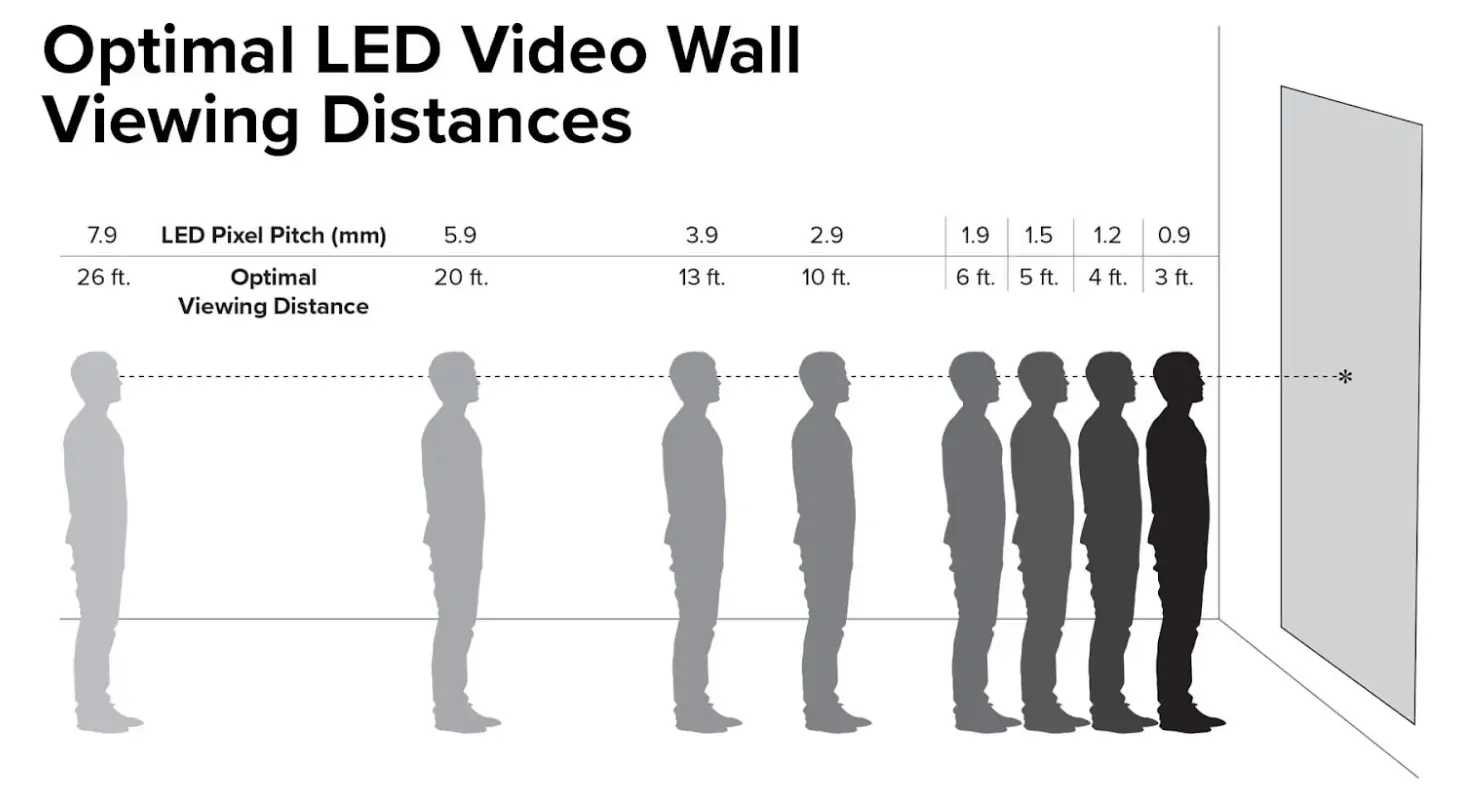
5.4 LED Types
The LED screen resolution is also affected by the type of LED technology adopted such as SMD, DIP, COB and GOB. As an example, SMD LEDs are suited to high-resolution displays since they are compact and densely packed compared to traditional LEDs, permitting smaller pixel pitches.
5.5 Content Source
With a high-resolution LED wall, the content still needs to at least be as high res as the wall otherwise the content will appear fuzzy on it. Using a 4K LED screen to play low resolution content (e.g. 720p) will produce blurry images.
5.6 Budget
High resolution LED displays require fine pixel pitches, which involve more LEDs per square meter and more advanced manufacturing processes that add significantly to the cost.
5.7 LED Controller and Processing Capability
The required LED display resolution should be supported by LED controllers and video processors. Entry-level systems are capable of up to 1080p, whereas more advanced systems do 4K or 8K.
When the controller doesn’t support high-resolution display content, the screen will downscale the image, thereby decreasing the clarity and quality.
All in all, LED wall resolution was mainly influenced by pixel pitches, screen sizes, viewing distances, LED types, content sources, budgets, and LED controller and processing capability. Whether you want to buy an LED screen with low or high resolution, these factors help you make the right choice for sharp and crisp image quality.
6. How to Calculate LED Screen Resolution for Specific LED Screen Sizes?
Compared with traditional LED displays with fixed resolution, LED screen resolution depends on the number of pixels within the physical size of the display because of modular designs. Before calculating the LED panel resolution, you should first be aware of the relationship between pixel pitch, screen size, and module configuration.
6.1 The Relationship Between Pixel Pitch, LED Screen Size, and Module Configuration
(1) Pixel Pitch
- Smaller pixel pitch = higher resolution per square meter
- Larger pixel pitch = lower resolution, but cheaper and brighter
(2) LED Display Size
Larger screen=more pixels and modules=higher resolution
(3) Module Configuration
- Module configuration=how LED modules are arranged across the screen
- More modules = more pixels = higher resolution
- Module layout must be calculated to match the desired total resolution
What is the relationship between them?
- Begin with pixel pitch and find out how many pixels should be fit in a meter.
- Screen dimensions when multiplied with pixel density would give the pixel resolution.
- By the means of the module configuration, plan the number of modules required to construct the screen physically.
6.2 How to Calculate LED Panel Resolution for Specific LED Display Sizes?
1. Find out the Size and Pixel Pitch of One LED Module
Begin by measuring the physically occupied area (in mm) of one LED module and the pixel pitch of the module.
Example: A standard indoor P1.875 LED module measures 480x320mm.
2. Calculate Pixels in One Module
Pixels formula= Module Size(mm) ÷ Pixel Pitch(mm)
- Horizontal Pixels= 480÷875=256 Pixels
- Vertical Pixels=320÷1.875=170.67≈170 Pixels (Rounded Down)
So, one module contains 256×170 Pixels.
3. Suppose the Total LED Screen Size
Let’s suppose the total LED display size you want is 2600mm x 960mm.
4. Compute the Number of Modules that will Fit into the Screen
Modules Horizontally=2600÷480=5.42(about 5 Modules)
Modules Vertically=960÷320=3(Totally 3 Modules)
Therefore, you will use 3 modules high and 5 modules wide.
5. Get the Actual Installed Screen Size
Actual Height=3×320=960mm
Actual Width=5×480=2400mm
The actual installed screen size is 2400mm x 960mm.
6. Calculate Total Screen Resolution
Horizontal Resolution=5 x 256=1280 Pixels
Vertical Resolution=3 x 170=510 Pixels
Total screen resolution is 1280×510 pixels.
7. How to Choose the Best LED Display Resolution?
If you don’t know exactly how to choose better LED screen resolution, here is a simple guide to help you choose.
1. Select LED Screen Types:You should know the applications of LED displays. Then you can choose the right LED display types according to your special requirements.
2. Consider Viewing Distance: The closer the viewers, the smaller the pixel pitch, and the higher the LED screen resolution.
3. Know Content Source: What you want to display on the screen also is important. The content type like text-heavy content needs higher LED screen resolution to display.
4. LED Display Screen Size Consideration: Large LED displays usually need high resolution(4K/8K) to avoid fuzzy images when viewed up close. A 4m indoor LED display in the hotel requires FHD resolution.
5. Budget: If you have a tight budget, you can choose an LED display screen with low resolution. Of course, if you want to create a better visual, a high LED screen resolution is an ideal choice.
Whether in shopping malls, concerts, retail stores, or outdoor events, this guidance can allow you to make a wise selection for LED display resolution.
8. What Can High-Resolution LED Screens Do for You?
Come on, blurry screens are all the rage in 2002. If you are trying your best to impress a crowd on pixel-based contents, it is time for you to advance your LED screen resolution.
High-resolution LED display is your new best friend, which are capable of marveling the crowds, taking events to a new level, and making your brand seem as though it belongs in the 21 st century.
So what do these high-resolution LED displays actually do for you? Let us get going.
8.1 Why You Need One: Advantages for Your Events
Here are the key advantages of high-resolution LED displays for your events, conferences, stores, or control rooms.
8.1.1 Building Trust Through Visual Excellence
When your brand epitomizes the latest trend in innovation, high quality, or luxurious experiences, the moment your display is of poor quality, your credibility will be compromised. Clear, LED displays also display your sense of precision and dedication to high quality in an unspoken fashion.
Consider the contrast: you just need to hold your next trade show exhibit or you have an essential presentation to give, and that hair-crisp imagery does not only shows information – it shows how competent you are, it makes a strong statement about your professionalism.
8.1.2 Unparalleled Image Clarity
Ultra-high-definition LED screens allow reading the smallest print such as the fine print on investment graphs, complicated product descriptions, or words on a large cinema screen.
There were no longer the times when the occupants in the back seats would squint and say, “Does anyone actually read what is written?” Everyone now enjoys equally the sharp, clear view, whether it is the VIPs in the first row or the fans unwinding in the back.
In high-resolution LED displays, the audience is not only reached but is also touched with the message.
8.1.3 Improve Customer Engagement
So, in other words, let us discuss attention spans, they are short. However, a display with high-res LED will assist in combating that. Animated graphics, clear video and vivid colors are audience attractors. There is a higher chance that your audience will remain interested and take photos, and even post about it online.
8.1.4 Smooth Playback for Video and Animation
Ever watched a choppy promo video on a cheap LED wall and felt physically uncomfortable? Yeah, we too. High-resolution displays have higher refresh rates, which means buttery-smooth playback. Animations flow, transitions pop, and there’s not a flicker in sight.
8.1.5 Good First Impressions
People are visual creatures. Studies show that we process visual objects 60,000 times faster than text. When your LED screens are clear, colorful and vivid, your audience will not only see your content, they will feel it.
Whether it’s a product launch, a corporate seminar or a music festival, high-resolution screens instantly enhance the perceived quality of your event. It’s like swapping plastic cutlery for silverware – people notice.
8.2 Why It is Your Secret Weapon, Not Just Tech?
To be honest, high-resolution LED screens are not exactly cheap. However, In their case, in fact, they are one of the most intelligent tools that you can spend money on, when it comes to communicating and building meaningful experiences.
Attract Attention: In a world swamped by substandard screens and half-cooked visuals, high-res LED screen puts your message off the radar. It’s attention-grabbing.
Make it Memorable: Good visuals get stuck in your head. Whether you are showcasing a product, communicating your message or placing a digital menu, crisp images make people remember and care.
Stay Ahead of the Game: With the content becoming more sophisticated and users demanding enhanced images, a high-res LED display helps you stay current. There will be no need to upgrade once again next year in order to keep up.
ROI that Shines: These screens do not just look good-they create outcomes. No matter if you are driving sales with engaging retail displays, filling seats at events or providing crystal-clear info in real-time in a control room, the return on investment is tangible. It makes you appear well-groomed, reliable, as well as one step ahead.
High-resolution LED displays are more than just pretty pixels. They are an effective form of communication, branding, and audience engagement. Whether it is super-high-resolution images, fluid operation and compatibility, they will make your content stand out exactly how you would have preferred.
Therefore, when you have your next event to plan, or digital display to set up, do not be satisfied with just okay. The displays with high LED screen resolution are your secret weapon to shock audiences.
9. FAQs
Because of the module boundaries, the real resolution will be down-rounded to common video standards (e.g., Full HD or 4K).
Sure, an LED screen can be 4K, provided that it has a resolution of 3840 x 2160 pixels, which requires the combination of a small pixel pitch and a big screen size to fit that number of pixels.
The most appropriate pixel pitch of high-resolution LED screens is usually P0.9 to P1.5 or less since the image provided by them offers a high level of clarity and detail, particularly within the indoor close-viewing applications.
It usually depends on screen sizes and viewing distances. 1920 x 1080 (Full HD) or 3840 x 2160 (4K) are generally chosen to provide a crisp and stunning visual experience.
Yes, LED display resolution directly affects the image clarity, text readability, and overall viewer experience.
10. Conclusion
LED screen resolution matters more than you think! I think you have known why after reading this blog. It plays a critical role in providing sharp images, vibrant videos, and lifelike animations.
EagerLED offers high-quality LED displays with different resolutions for choice including HD, Full HD, 4K, or even 8K. Contact us to customize the optimal LED display resolution.
Related articles
A Complete Guide to Stadium Screens 2025 : Building Immersive Sports Game
2025-03-12T09:47:22+00:00September 20, 2024|LED Display Screen, News|
Stadium screens, also known as sports LED displays, are widely used in stadiums and arenas to display sponsor adverts, video replays and exciting match moments. It plays a […]
The Evolution of LED Screens: A Comprehensive Guide to LED Screen Factories, Suppliers, and Solutions
2024-10-11T03:49:36+00:00September 23, 2024|LED Display Screen|
As advanced innovation proceeds to development at a fast pace, LED screens have gotten to be a basic apparatus for businesses, occasion organizers, sponsors, and different businesses around the world. […]
2024 EagerLED National Day Holiday Notice
2024-09-30T02:06:05+00:00September 30, 2024|Company News, News|
Dear Customers,
Thank you for your continued support and trust. The National Day is coming, so we will be on holiday from Oct 1st to Oct 7th, 2024. If you have […]

